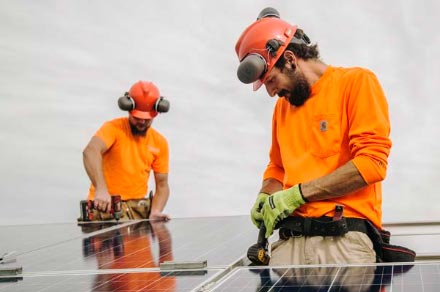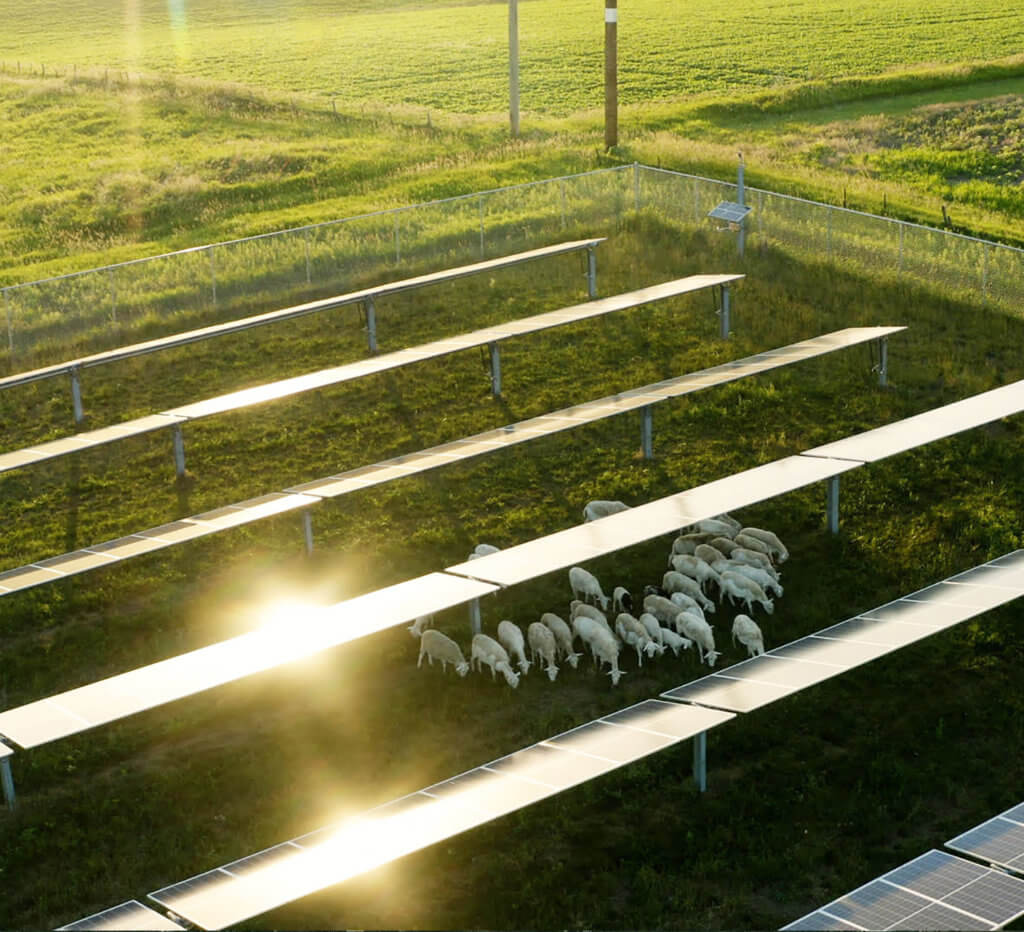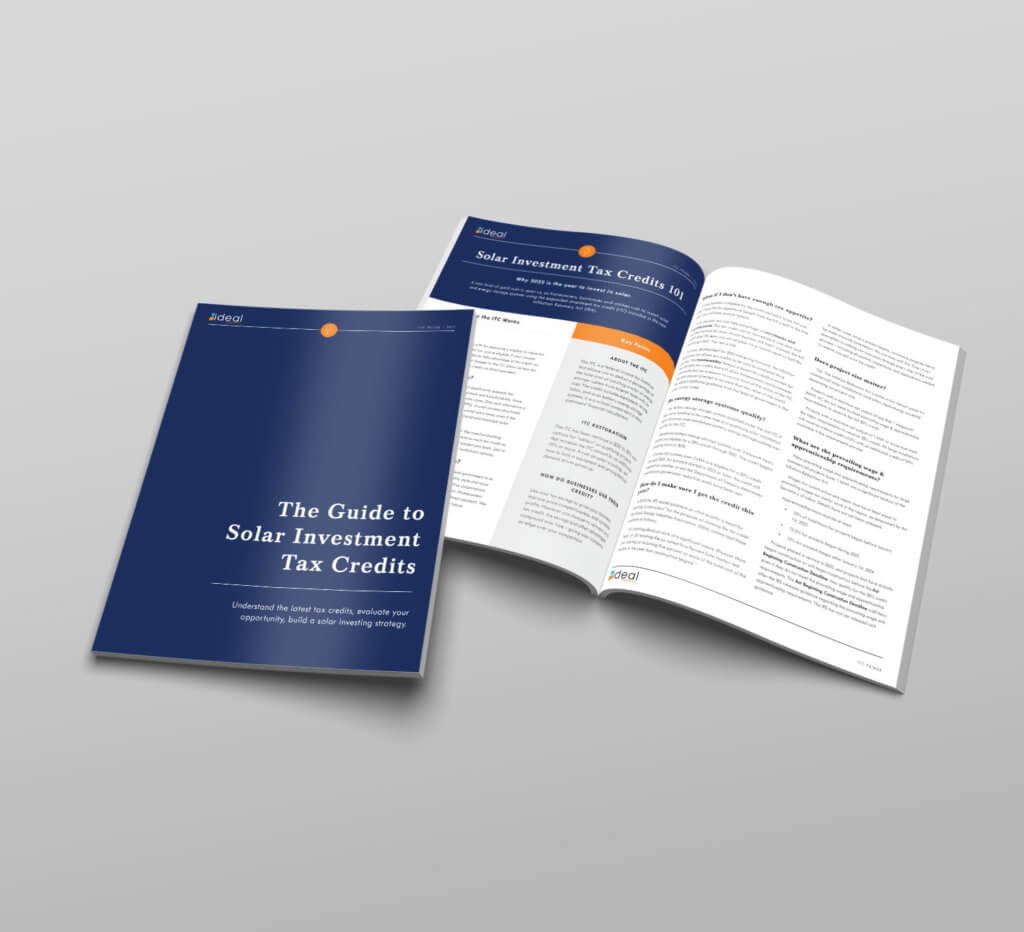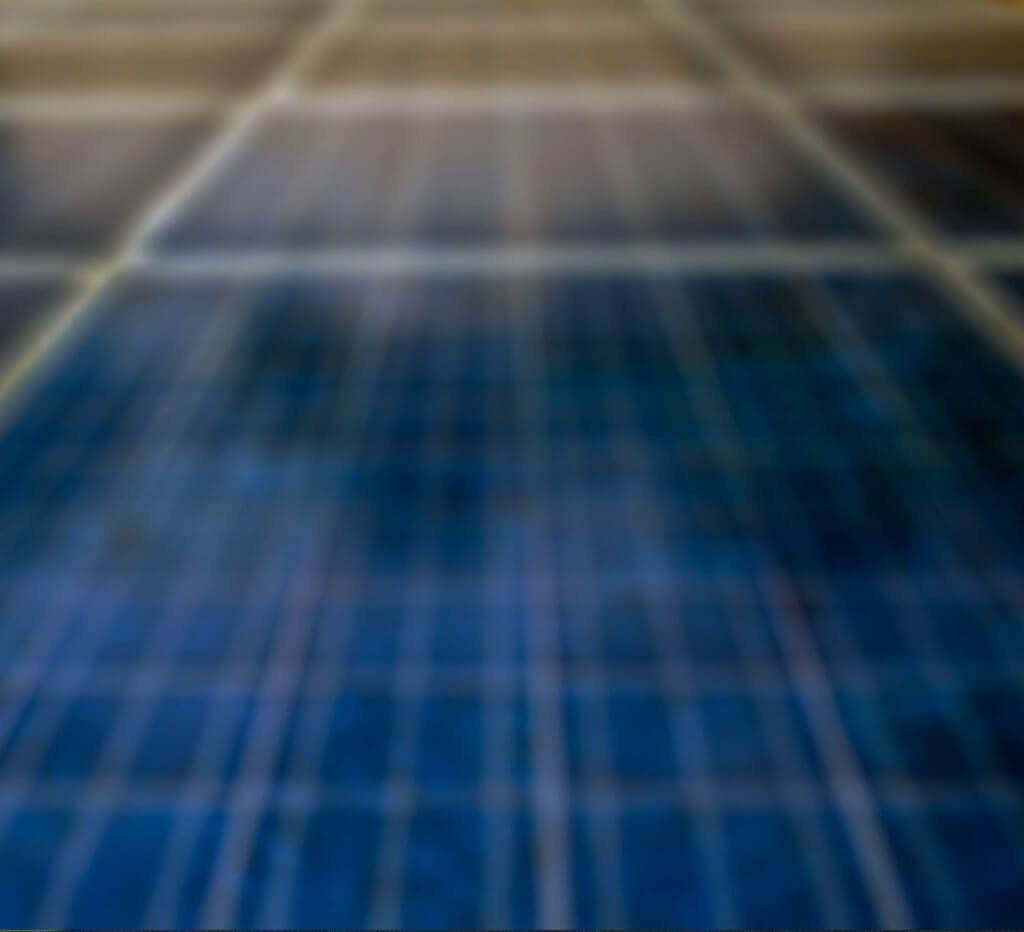The newly passed Inflation Reduction Act provides long-term tax incentives for solar and energy storage.
This is the most important climate legislation to be passed in U.S. history, with $369 billion over the next decade dedicated to clean energy, environmental justice and climate change.
The Solar Investment Tax Credit has been extended up to 10 years. The Inflation Reduction Act, which contains many renewable energy provisions, was signed into law by President Biden on August 16th, 2022.
The law is a sweeping overhaul of clean energy policy in general, and the investment tax credit in particular. Many of the specifics in the programs discussed below will not be fully known until the IRS, Department of Treasury, and Secretary of Labor issue additional guidance.
The Inflation Reduction Act (IRA) restored the investment tax credit (ITC) to 30% and extends it by 10 years. The 30% credit is applied retroactively to installations started this year.
“This bill is a huge win for all businesses and homeowners considering solar,” said Troy Van Beek, CEO of Ideal Energy.
The ITC began stepping down this year and was at 26% before the passage of the IRA. It was scheduled to step down to 22% in 2023, and 10% for commercial installations and 0% for residential installations in 2024.
The rules regarding residential and commercial installations are different than in the past. For residential installations, the ITC will continue at 30% through 2032. It will begin stepping down in 2033.
For commercial installations, the ITC will continue at 30% at least through 2024. For projects started in 2025 or later, the credit will depend on whether or not the Department of Treasury determines greenhouse gas emission reduction goals have been met.
In addition, the 30% tax credit now applies to standalone battery energy storage systems. Previously, the credit only applied to energy storage systems when they were installed at the same time as a qualifying solar installation. The change allows homeowners and businesses with existing solar installations to more affordably add energy storage systems to extend the usefulness their solar arrays.
Residential battery energy storage systems over 3 kWh are eligible for a 30% credit through 2032. The credit begins stepping down in 2033.
Commercial systems over 5 kWh are eligible for a 30% credit through 2024. For projects started in 2025 or later, the credit will depend on whether or not the Department of Treasury determines greenhouse gas emission reduction goals have been met.
The IRA creates a two-tiered system for commercial solar (and other clean energy) installations depending on project size.
Projects with a maximum net output of less than 1 megawatt (MW) AC do not need to meet prevailing wage & apprenticeship requirements to receive the full 30% credit.
Projects with a maximum net output of 1 MW or more do need to meet the labor requirements to receive 30% credit. All large installations will receive a base credit of 6% with an additional credit of 24% available if the requirements are met.
New prevailing wage and apprenticeship requirements for large commercial projects (over 1 MW) are a significant feature of the IRA.
Wages for construction and repair must be at least equal to prevailing wages for similar work in the region, as determined by the Secretary of Labor.
Apprenticeship hours must be at least 10% of total hours for projects begun before January 1st, 2023; at least 12.5% for projects begun during 2023; and at least 15% for projects begun after January 1st, 2024.
Projects placed in service in 2022, and projects that have already begun construction or will begin construction before the Act Beginning Construction Deadline, may qualify for the 30% credit even if they do not meet the prevailing wage and apprenticeship requirements. The Act Beginning Construction Deadline is 60 days after the IRS releases guidance regarding the prevailing wage and apprenticeship requirements. We anticipate the IRS guidance to be released within the next 3-9 months.
One change to the ITC program proposed in the Build Back Better Act that did not make it into the IRA is refundability – the option to take a cash refund in lieu of a tax credit if the value of the tax credit exceeds the amount of taxes owed. This would have made solar financially viable for lower and middle income homeowners as well as businesses with low tax exposure.
However, a limited form of direct payment is included in the IRA. Certain entities, like tax-exempt nonprofits, state and local governments, Indian tribal governments, Alaskan Native corporations, and rural electric cooperatives, can opt for direct payment. This will reduce the need for third-party investors and complex power purchasing agreements.
The IRA also includes adders that can increase the value of the solar ITC on some clean energy projects. Adders are available for projects that meet certain criteria for project location or domestic content.
Examples of qualifying locations includes projects on brownfield sites or in communities near closed coal mines or retired coal power plants. Domestic content requirements vary depending on the type of clean energy project. Examples include 100% use of domestic steel or iron.
- Project location adders are worth 10% (or 2% if prevailing wage and apprenticeship requirements are not met).
- Domestic content adders are also worth 10% (or 2% if prevailing wage and apprenticeship requirements are not met).
- Up to 10% is available for projects under 5 MW in low-income communities or on tribal lands.
- Up to 20% is available for projects under 5 MW that qualify as low-income residential building or economic benefit systems.
Roth Capital Partners estimates that when stacked, these adders could increase the ITC from 30% up to 50% for some projects.
The final rules for these adders are anticipated to be codified over the next several months.
Another brand new modification to the ITC is transferability. The IRA allows tax payers to sell their tax credits. This should open up a market for credits and allow solar customers with insufficient tax exposure to indirectly take advantage of the ITC. This feature, although more complex than direct payment, could make solar energy viable for many low and middle income homeowners, as well as businesses with low tax exposure.
The IRA sets the production tax credit (PTC) to 2.6 cents per kWh for electricity produced and sold in 2022. This amount will adjust for inflation over time.
In addition, the new PTC allows solar projects to elect to choose either the ITC or the PTC. Solar projects have not been eligible to receive the PTC since 2006.
Many of the options and restrictions in the ITC are also present in the PTC, including adders, direct payment, transferability, and prevailing wage and apprenticeship requirements for projects over 1 MW.
The IRA creates a technology-neutral 10-year credit for clean hydrogen production worth up to $3.00/kg of hydrogen. Projects must be placed in service before 2033.
The base credit is $0.60 per kilogram (kg) of hydrogen (H2) produced.
The credit is available in four tiers, based on lifecycle carbon intensity, measured in kg of CO2 equivalent (CO2e) per kg of H2:
- <0.45 kg CO2e / kg H2 – 100% percent of $0.60 credit = $0.60/kg H2
- 0.45–1.5 kg CO2e / kg H2 – 33.4% percent of $0.60 credit = $0.20/kg H2
- 1.5–2.5 kg CO2e / kg H2 – 25% percent of $0.60 credit = $0.15/kg H2
- 2.5–4 kg CO2e / kg H2 – 20% percent of $0.60 credit = $0.12/kg H2
The credit available to each of these tiers is multiplied by five if prevailing wage and apprenticeship requirements are met, or if construction begins prior to the Act Beginning Construction Deadline. Under these circumstances, the base credit becomes $3.00/kg H2.
If these requirements are met, and the 5x multiplier is applied, the four credit tiers are as follows:
- <0.45 kg CO2e / kg H2 – 100% percent of $3.00 credit = $3.00/kg H2
- 0.45–1.5 kg CO2e / kg H2 – 33.4% percent of $3.00 credit = $1.00/kg H2
- 1.5–2.5 kg CO2e / kg H2 – 25% percent of $3.00 credit = $0.75/kg H2
- 2.5–4 kg CO2e / kg H2 – 20% percent of $3.00 credit = $0.60/kg H2
This development promises to revolutionize the renewable hydrogen industry.
The $369 billion dollars allocated to clean energy by the IRA constitutes the largest investment ever by the US to combat climate change.
“This legislation is the most transformational investment America has ever made in our climate future,” said Abigail Ross Hopper, president and CEO of the Solar Energy Industries Association (SEIA).
In addition to tax credits for solar, wind, and battery energy storage, the renewable energy provisions of the bill also include expanded tax credits for EVs; funding for carbon capture and storage, electric vehicle factories, and domestic solar manufacturing; subsidies for nuclear power; and federal assistance to help poor communities affected by climate change.
The IRA also shifts tax incentive policy from specific technologies like wind and solar energy towards a technology-neutral clean energy tax credit system. Both the ITC and PTC will eventually phase out and be replaced by the Clean Electricity Investment Credit and the Clean Energy Production Tax Credit, respectively.
Impact on Climate Change
Analysts say the IRA will significantly reduce US carbon emissions and help the nation achieve its climate commitments.
“Our preliminary estimate is that the IRA can cut US net greenhouse gas emissions down to 31% to 44% below 2005 levels in 2030 – with a central estimate of 40% below 2005 levels – compared to 24% to 35% under current policy,” according to an analysis by Rhodium Group.
The US has committed to cutting greenhouse gas emissions to 50% below 2005 levels by 2030. The Inflation Reduction Act is a major milestone towards that goal.
The IRA is a big win for the solar industry – and for homeowners and businesses that were not able to pursue solar when the credit was at 30% in the past.
However, it could create a land rush phenomenon that will stretch already tight supply chains. This could affect solar panel availability and drive up solar panel prices in the short term. Manufacturing incentives should eventually lead to increased domestic solar panel production, but this could take several years.
Once additional guidance is issued by the IRS and Secretary of Labor, large commercial projects that are able to stack adders to get big credits could drive up demand for solar panels significantly. For smaller projects that are exempt from these requirements, it makes sense to move forward before demand surges.








